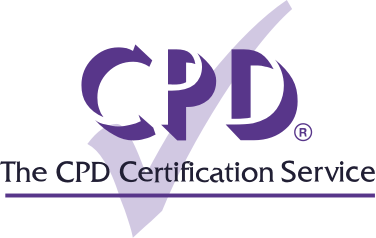Business Intelligence (BI) is the discipline of transforming data into actionable insights using the latest technological tools. The integration of BI processes has become increasingly important to organisations across industries.
This article will outline the four main concepts of this field - and how to effectively measure its impact. It will also explain the advantages of BI-focused Continuing Professional Development (CPD) courses in developing the key skills and knowledge needed to successfully implement and utilise Business Intelligence within organisations.
What is Business Intelligence?
Business Intelligence (BI) is a technology-driven process that involves collecting, integrating, analysing, and transforming raw data into meaningful information. Key components include data collection from various sources, data integration through Extract, Transform, and Load (ETL) processes, tools such as Online Analytical Processing (OLAP), data mining, and data visualisation through presentations, dashboards and reports.
The benefits of Business Intelligence can include improved decision-making, operational efficiency, enhanced customer insights, competitive advantage, and better risk management. Fundamentally, BI provides actionable insights that drive business success.
What are the Four Concepts of Business Intelligence?
Although it can at times seem a complex topic, Business Intelligence is ultimately about making smart, data-driven decisions to help organisations thrive. At its core, BI is built on four main concepts that guide everything from gathering relevant information to interpreting and actioning insights from data. Here's a closer look at these key concepts:
Data Gathering: This concept involves collecting data from various sources, both internal and external to the organisation. Internal sources might include databases, Enterprise Resource Planning (ERP) systems, Customer Relationship Management (CRM) systems, and spreadsheets. External sources could include market research, social media, and public datasets. The goal is to gather comprehensive and relevant data that can provide insights into different aspects of the organisation.
Data Storage: Once data is gathered, it needs to be stored in a way that is accessible and easy to analyse. This typically involves the use of data warehouses or data marts. These centralised repositories are designed to store large volumes of data in a structured manner, enabling efficient querying and analysis. Data storage also involves ensuring data quality through cleaning, normalisation, and integration processes.
Data Analysis: This is when raw data is transformed into meaningful insights. Various analytical techniques and tools are used, including Online Analytical Processing (OLAP), data mining, statistical analysis, and machine learning. The aim is to identify patterns, trends, and relationships within the data that can inform business decisions. Data analysis helps in forecasting, identifying business opportunities, and solving complex business problems.
Data Presentation: The final concept involves presenting the analysed data in an understandable and actionable format. This is achieved through data visualisation tools that create dashboards, reports, charts, and graphs. Effective data presentation makes it easier for decision-makers to grasp complex insights quickly and take informed actions. It ensures that the right information is delivered to the relevant people in an accessible way.
These four key concepts work together to create a comprehensive system that helps organisations leverage their data for strategic and operational decision-making.
How do you measure Business Intelligence?
Measuring Business Intelligence involves assessing its impact on organisational performance and decision-making processes. Key metrics include user engagement and satisfaction, data accuracy and integration efficiency, query performance, and system availability.
Evaluating the impact on business includes measuring improvements in decision-making effectiveness, operational efficiency gains, and ROI (meaning return on investment - the calculation of the monetary value of an investment versus its cost). It also entails monitoring how your Business Intelligence aligns with strategic goals and contributes to achieving key performance indicators, such as continued revenue growth and customer retention. Continuous evaluation ensures initiatives deliver value and support organisational objectives effectively.
Is Business Intelligence the same as Data Analytics?
Business Intelligence and Data Analytics are terms that are often used interchangeably. Whilst they share many crossover features and are related, they are two separate and distinct terms.
Data analytics is used to transform and clean raw data into actionable information. BI is used to make data-driven decisions from accurate and actionable information. In effect, data analytics is a key tool used within overall Business Intelligence. Business Intelligence is a holistic process used to help organisations make relevant, data-driven decisions using past and present performances. BI involves presenting data in a way that helps business leaders make strategic decisions – and data analytics is invariably a pivotal tool in achieving this wider outcome.














